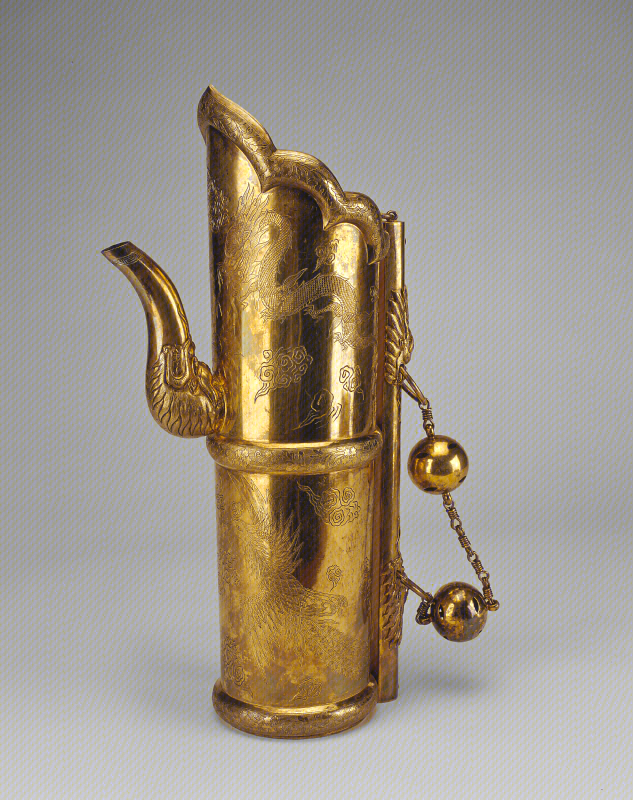
朱碧山款银槎
Category:
Gold and Silver
Period:
Yuan dynasty
This silver canoe is shaped like an old tree trunk with one end curling upward and covered with the rugged texture of the bark of a pine tree. Central to the work is a Taoist practitioner with a topknot hair-style and typical religious attire, including thick-soled shoes and a long, ample robe. He sits on the canoe with his eyes riveted upon a book in his hand.
Dragon Canoe (Long cha, two distinct characters) is carved on the stern of the small boat. The fifteen characters carved on the rim of the cup may be translated as "Carrying jade-like wine for one's own enjoyment; floating along the Milky Way to heaven -- by Du Ben." Carved on the bottom of the canoe in the regular script is a poem, which is translated as follows: "Li Bai went mad after a hundred cups; Old Liu Ling was always intoxicated. Knowing the pleasure of drinking, They leave their memory behind in the world." Carved behind the stern in regular script are twenty-one more characters, which are translated as, "In the yiyou year of the Zhizheng period, Zhu Bishan made this in the Hall of Eternal Spring in eastern Wu to be preserved by his sons and grandsons". This text appears with the impression of a seal with the two characters Hua Yu in the seal script.
The silver cup was cast and then carved into its final shape. The head, hands, and shoes of the Taoist were welded on without leaving traces of the welding. The silver canoe combines the characteristics of traditional painting and sculpture and marks the impressive technical and artistic proficiency of silver casting during the Yuan period. The significant work is highly valuable for the study of the history of artistic development in the Yuan dynasty.
Show All Details
Show Fewer Details
Suggest Feedback

Relevant Recommendations







